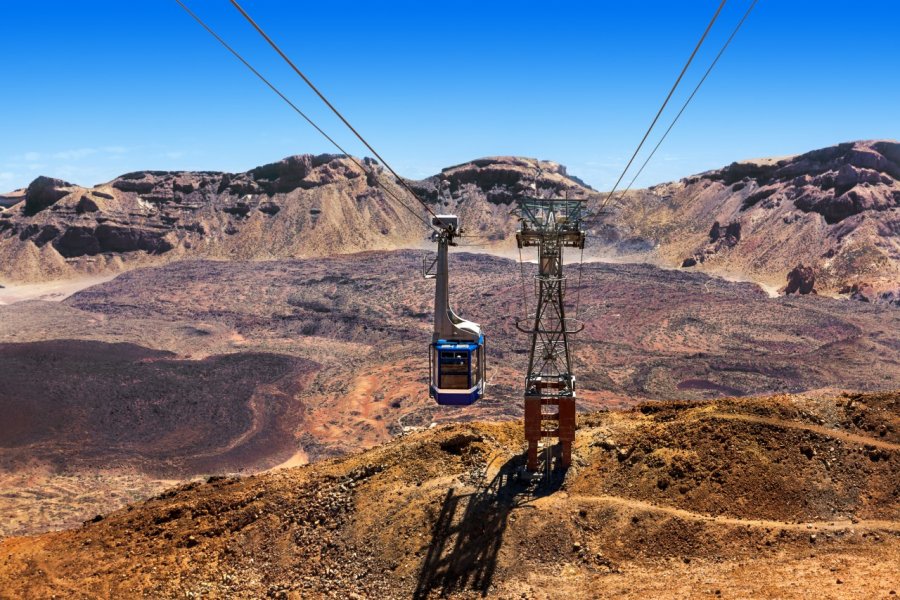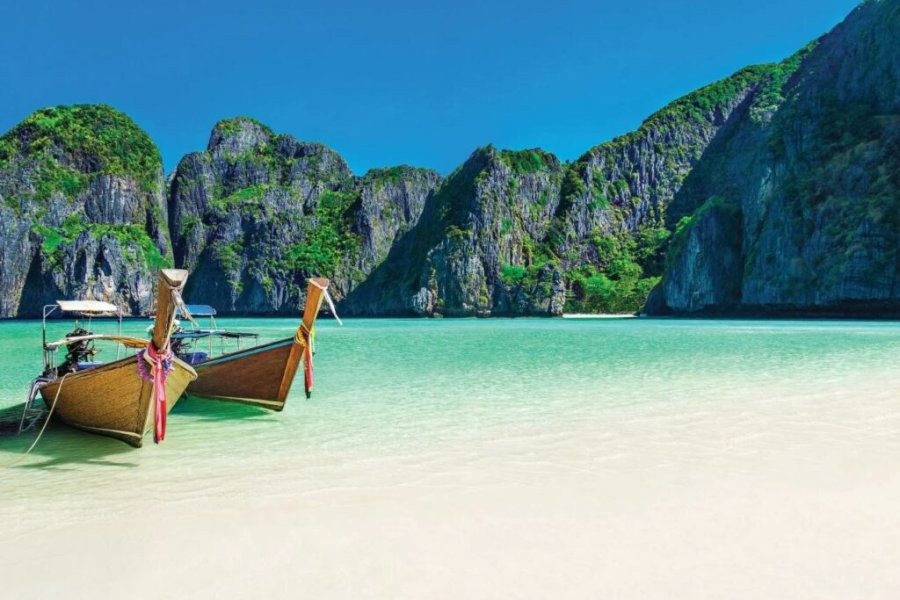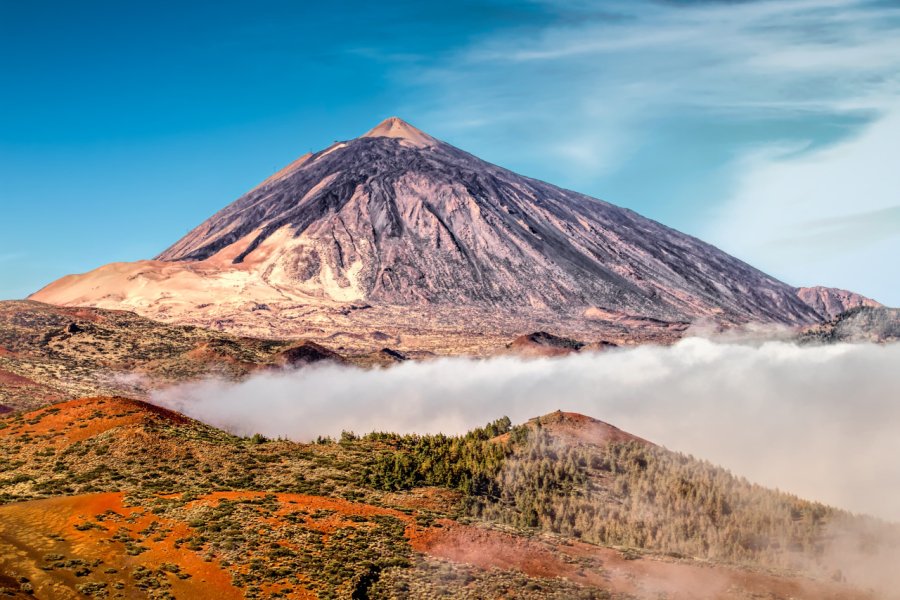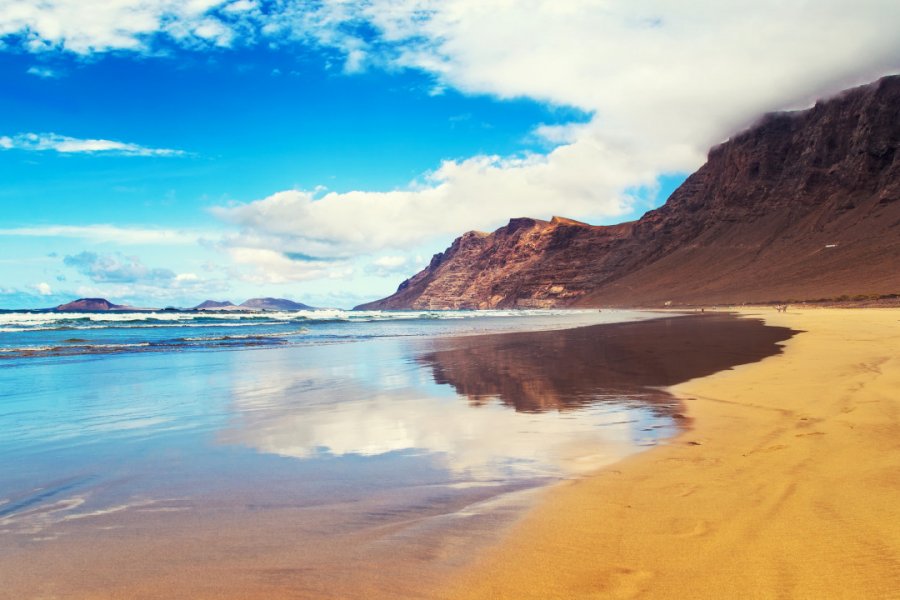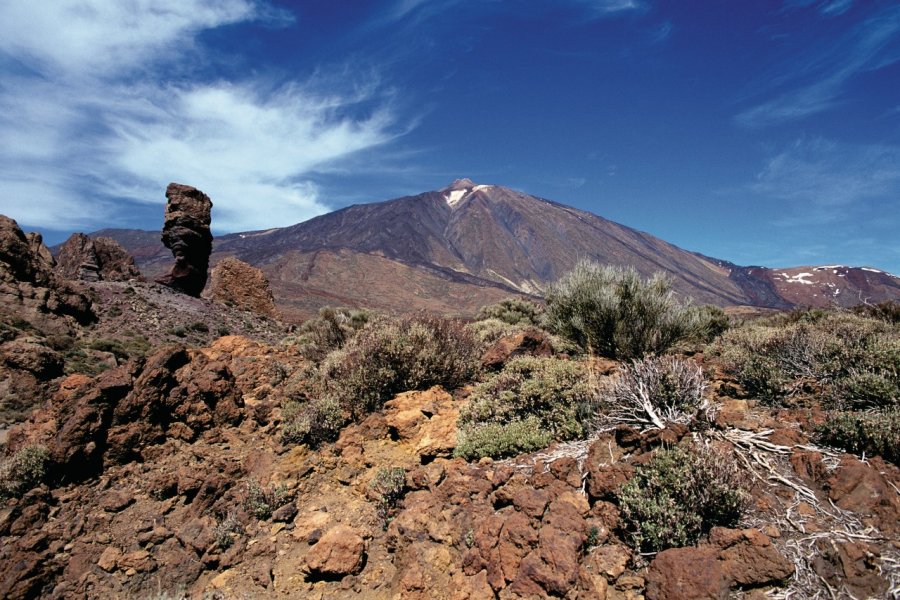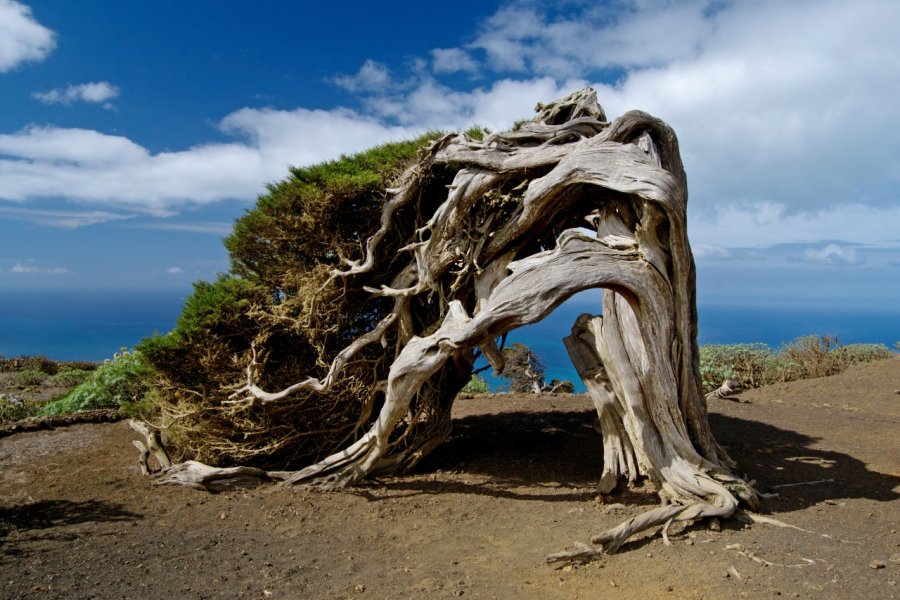Travel guide Canary Islands
Often mistakenly placed in the Mediterranean, probably by analogy with their cousins the Balearic Islands, the Canary Islands are actually located several hundred kilometers west of the Moroccan coast, a latitude that guarantees crystal clear water and temperatures in summer and throughout the year. The two main islands, Gran Canaria and Tenerife, have long been known as the specialists in all-inclusive vacations with their toes in the air. However, it would be a pity to limit one's vacations in the Canaries to hotels with large swimming pools. These Spanish islands, which are the perfect place to spend a lazy holiday, are endowed with a variety of landscapes. Tenerife, for example, is home to the majestic Teid, a volcano with a lunar landscape and an excellent spot for stargazing. More wild, their neighbors each have their specialties: La Gomera impresses with its lush vegetation and offers us beautiful walks in its pine forests and its black sand beaches. La Palma, with its heavenly coves where swimming is so pleasant and its recent volcanic activity. Fuerteventura, with its large expanses of fine sand and turquoise waters, promises you an unforgettable trip. El Hierro with its unsuspected geological formations where you can try diving and Lanzarotte with its waves and folklore. And finally, Gran Canaria, with its divine sand dunes! Many tropical activities are offered including many water sports such as scuba diving. You can also go and meet whales and dolphins that also enjoy the warm waters of the archipelago. This tourist guide will allow you to draw the canvas of your trip there. It is impossible to talk about the Canary Islands without mentioning their gastronomy: fish, seafood and tapas are the basis of most of the typical dishes, but it is the papas arrugadas, small seasoned potatoes, perfect for a good meal during a family trip.
What to see, what to do Canary Islands?
-
Book an activity
-
Customized travel
- The most beautiful cities Canary Islands
When to go Canary Islands ?
In the Canary Islands, there is no low season as such, because the weather is good all year round and temperatures oscillate between 20 and 30°C. The high tourist season is the summer, from May to October, with peaks in July and August. Gran Canaria, Fuerteventura and Lanzarote are fully booked in summer because of the beautiful beaches that these islands offer. Tenerife, La Palma, La Gomera and El Hierro remain very little visited and will delight those who are looking for more tranquility. The best time to go is, without a doubt, from November to April, because when our landscapes get cold, those of the Canaries are still basking in the sun. And it is also the occasion for many Spanish and international families to travel during the Easter holidays or to see the carnival in the sun! However, accommodation is more expensive during the months of December, January and February.
Suggested addresses Canary Islands
Travel Canary Islands
-
Find a hotel
-
Car Rental
-
International e-SIM package
-
Find a local agency
A one week stay in the Canary Islands allows you to discover some of the essential points of the islands of Tenerife and Gran Canaria. To set off on an assault on the Teide, the highest point in Spain, to plunge into the streets of La Laguna, whose layout has inspired South American cities. Before getting to know the Guanche heritage of Gran Canaria, in the Risco Caído d'Artenara and in the "sacred mountains" that enamel it. All of them listed as UNESCO cultural or natural heritage. In two weeks, your steps will also take you to La Gomera, to enjoy the Garajonay Park, the largest laurel forest in the Canary Islands and the charm of San Sebastián de la Gomera or Hermigua. You will continue to the beautiful beaches of Corralejo, in Fuerteventura, in the natural pools of El Hierro and get as close as possible to the volcanoes of the Timanfaya Park, in Lanzarote or the Caldera de Taburiente, in La Palma
Find unique Stay Offers with our Partners
How to go Canary Islands
How to go alone
The Canary Islands are very safe and modern, so traveling alone is not a problem. Moreover, the diversity of the offer in transport, accommodation and activities will allow you to build the trip that suits you. However, be sure to book transportation and accommodations in advance in high season to avoid surprises.
How to go on a tour
The Canary Islands offer both all-inclusive trips in resorts with activities and excursions à la carte and themed trips, especially for hikers and volcano lovers. Trips range from 10 days to three weeks and generally include visits to two islands, or even three for the most ambitious.
How to get around
You must inevitably take the boat or the plane to move between the islands. Prices and travel times vary greatly, but between very distant islands, we recommend the plane, which is a little more expensive but very fast. On the other hand, if you are jumping around a lot, the boat is much more convenient. On the islands, renting a car is a good solution but buses also exist and serve many destinations.
Featured articles Canary Islands
Discover Canary Islands
The Canary archipelago is first and foremost a land of festivities, which can easily be discovered via the emblematic Santa Cruz Carnival. It's the world's second-largest carnival, after Rio de Janeiro's, bringing together thousands of people during the month of February. A must if you're there at the right time. But the Canary Islands' festive calendar runs all year round and on all islands, from the fiesta de la Rama in Agaete to the Bajada de la Virgen in Candelaria, not forgetting jazz festivals and the world sailing championship in Fuerteventura. In terms of historical legacy, your stay will also be an opportunity to discover the extraordinary Guanche heritage, which has been classified as a Unesco World Heritage Site in the case of the Risco Caído d'Artenara and the sacred mountains of Gran Canaria. And no trip is complete without a taste of the "bananas" that are omnipresent in the landscape and on our plates.
Pictures and images Canary Islands
The 12 keywords Canary Islands
1. Trade winds
These winds blow from east to west and have a determining influence on the climate and vegetation of the Canaries. They push the clouds always in the same direction, and the latter remain blocked by the mountains. Their passage makes the Canary Islands an ideal destination for all kinds of board sports, windsurfing, paragliding and kitesurfing, etc.
2. Aloe Vera

Nicknamed miraculous plant, silent healer, doctor of paradise or elixir of longevity, it is a plant known for its cosmetic action on the skin and its nourishing properties. You will find it everywhere, markets, souvenir stores or in the supermarket. It is available in sun oil, shampoo, shower gel or fruit juice.
3. Barraquito

The barraquito is a very sweet coffee with milk that is only drunk in the Canary Islands. But in all the islands and often. It is traditionally served in a small glass, with multiple herbal liqueur, lemon, cinnamon, but the vast majority of bars and cafes will simply serve it with a good dose of condensed milk.
4. Carnival
In the Canary Islands, this festival is as important as in Brazil. With that of Santa Cruz de Tenerife, but which also takes place on the islands of La Palma, in Santa Cruz de La Palma, and Gran Canaria in its capital, Las Palmas. Festivities that end with the traditional burial of the sardine, which is burned around a good table.
5. Cigars
For the writer Manuel Vázquez Montalbán, a puro smoker from now on, some Canarian puros were quite equivalent to those from Cuba. This is not strange, since since the 19th century the Canary immigrants to Cuba brought back to the country this unique know-how. You can find them in the small market of La Palma or in stores.
6. Rooster
Their fights are officially banned, but they still exist clandestinely. In 2017, the Canarian government presented a bill to ban them more effectively than the 1991 law, which triggered strong protests, especially on the island of La Palma, which has the largest number of associations in this area.
7. Desert

Of sand or lava, these islands abound in desert expanses. It is in the heart of the parks of Teide in Tenerife and Timanfaya in Lanzarote that the volcanic deserts are the most spectacular. The lava flows draw breathtaking lunar landscapes. In Fuerteventura and Gran Canaria you can see sand dunes as far as the eye can see.
8. Lizard
You will be surprised by the presence of large lizards in the rock gardens. The blue-throated lizard is a magnificent endemic species that often shows itself. And what can we say about the presence of geckos, or salamanders, which are nocturnal reptiles that enter houses to hunt all sorts of insects.
9. Canarian Wrestling
It is an ancestral native sport still rooted in the local culture. Two teams of twelve wrestlers compete in matches. However, the bregas (matches) are only between two wrestlers. In a 10-meter circle covered with sand, the one who knocks down his opponent twice in less than three minutes wins the match.
10. Rum
It is a great local Canarian production, especially in La Palma, Aldea rum, and in Gran Canaria, honey rum, and it is drunk both as an aperitif and as a digestive. It originates from a plant, the sugar cane. The sap ferments for several months to turn into alcohol. After distillation, we obtain a brandy of cane, the rum.
11. Silbo
Used for centuries, this whistled language of the Gomeros allowed the inhabitants of this steep island to talk to each other from one valley to another. Roads and new means of communication have contributed to the decline of the silbo, but it still persists in some parts of the island and is listed as an intangible heritage by UNESCO since 2009.
12. Volcano

The Canary Islands were born from an important seismic activity in this region. The best known is that of Teide in Tenerife. But the last eruption concerning that of Tajogaite in La Palma in 2021, El Hierro having been subject to an underwater eruption, on October 12, 2011, off La Restinga. With a main cone at 120 meters under the sea.
You are from here, if...
You will really be Canarian if you are familiar with your interlocutors, even if you have only known them for a short time. The use of the familiar form of address is part of the customs. Eventually, use usted and let your interlocutors specify that they wish to switch to familiarization.
You will learn that the royal family is respected and appreciated there, so avoid making a republican mockery of it. There's also no need to rage against religion. Festivals, often religious, have strong identity connotations and are experienced as cultural heritage.
If politics arises in the conversation, let the resentment against the central power that ignores the islands and against the morgue of the godos, the Spaniards against the Canarians, be expressed.
Also avoid talking about the traditional rivalry between Tenerife and Gran Canaria, about which you know little and which officially does not exist.
Finally, you will have in heart to talk about the guagua and not the bus and of course to respect the environment of these islands.
Other destinations Canary Islands
- Parc National De Timanfaya
- Parc National Du Teide
- Los Tiles
- Las Palmas De Gran Canaria
- Betancuria
- Teguise
- Caldera De Taburiente
- Parc National De Garajonay
- Massif De L'Anaga
- Gáldar
- Santa Cruz De La Palma
- La Orotava
- Isla De Lobos
- San Cristóbal De La Laguna
- Arrecife
- La Graciosa
- Agaete
- Garachico
- Telde
- Los Gigantes

